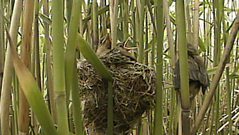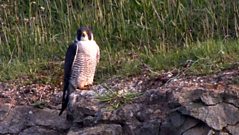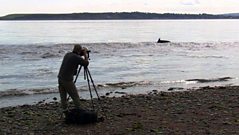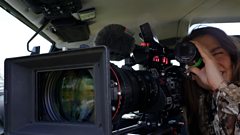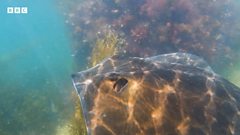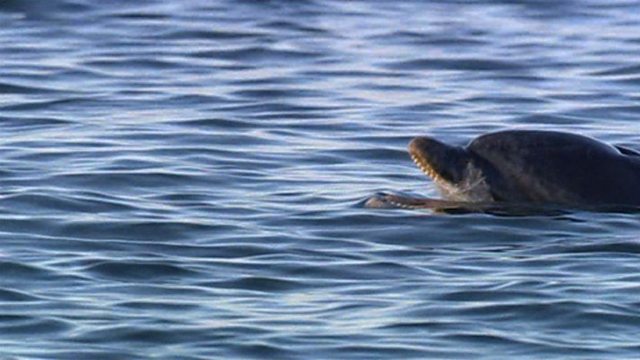
Dolphin discussions
Hydrophones pick up the extraordinary communication between dolphins.
Using hydrophones, you can often hear things before you see them. Sound recordist Chris Watson has been making recordings of the dolphins in the Moray Firth and has some interesting sounds. Research of dolphin sounds show that some of the squeaks may be name calls between individual animals, showing that dolphins learn their name from their mother and use this throughout their lives to identify each other. The rapid clicking sound is the sonar echolocation system used by the dolphins for hunting and finding prey. It enables the dolphins to get a picture of the world around them. Unlike humans it is thought they can send this image to other dolphins by repeating the sonar pattern, a form of telekinesis. The dolphins in the Moray Firth are hunting down the salmon and sea trout, and hunt surprisingly large fish in these waters. The bottlenose dolphin is the largest dolphin in the world, certainly the largest around the shores of Britain. A large male can be about 4 metres long, which goes some way to showing how large the fish are that they are catching in these waters. Dolphins have prolems once they have caught their fish, as their teeth are best designed for grabbing, not tearing flesh. As a result, the dolphin must swim into the oncoming tide, trying to break the fish into smaller pieces. A young calf, about a year old still suckles from its mother, but it is constantly learning how to hunt, it catches a small pipe fish in the water which is a good illustration of how detailed their analysis must be using sonar. One problem the Springwatch team noticed whilst filming the dolphins was the noise caused by even small boats. Noise can travel five times faster in salt water than it does in air, and is astonishingly loud over a huge distance, which creates a problem for sealife that depends on acoustic communication.
Duration:
This clip is from
Featured in...
![]()
Βι¶ΉΤΌΕΔ Nature
Be captivated, informed and inspired by the world's wildlife.
More clips from Episode 8
-
![]()
Filming reed warblers
Duration: 03:18
-
![]()
Last lesson
Duration: 02:26
-
![]()
Finding the quarry
Duration: 04:02
-
![]()
Scottish dolphins
Duration: 02:27
More clips from Springwatch
-
![]()
Hannah Stitfall discovers RSPB Arne's reptiles
Duration: 02:53
-
![]()
Hannah Stitfall goes behind the scenes on Springwatch
Duration: 01:18
-
![]()
Enjoy the calmness of a kelp forest
Duration: 01:11


